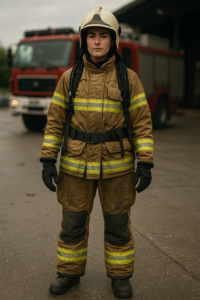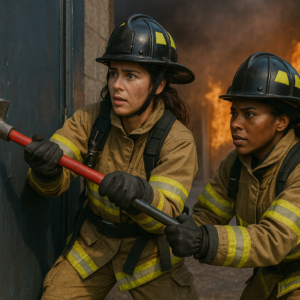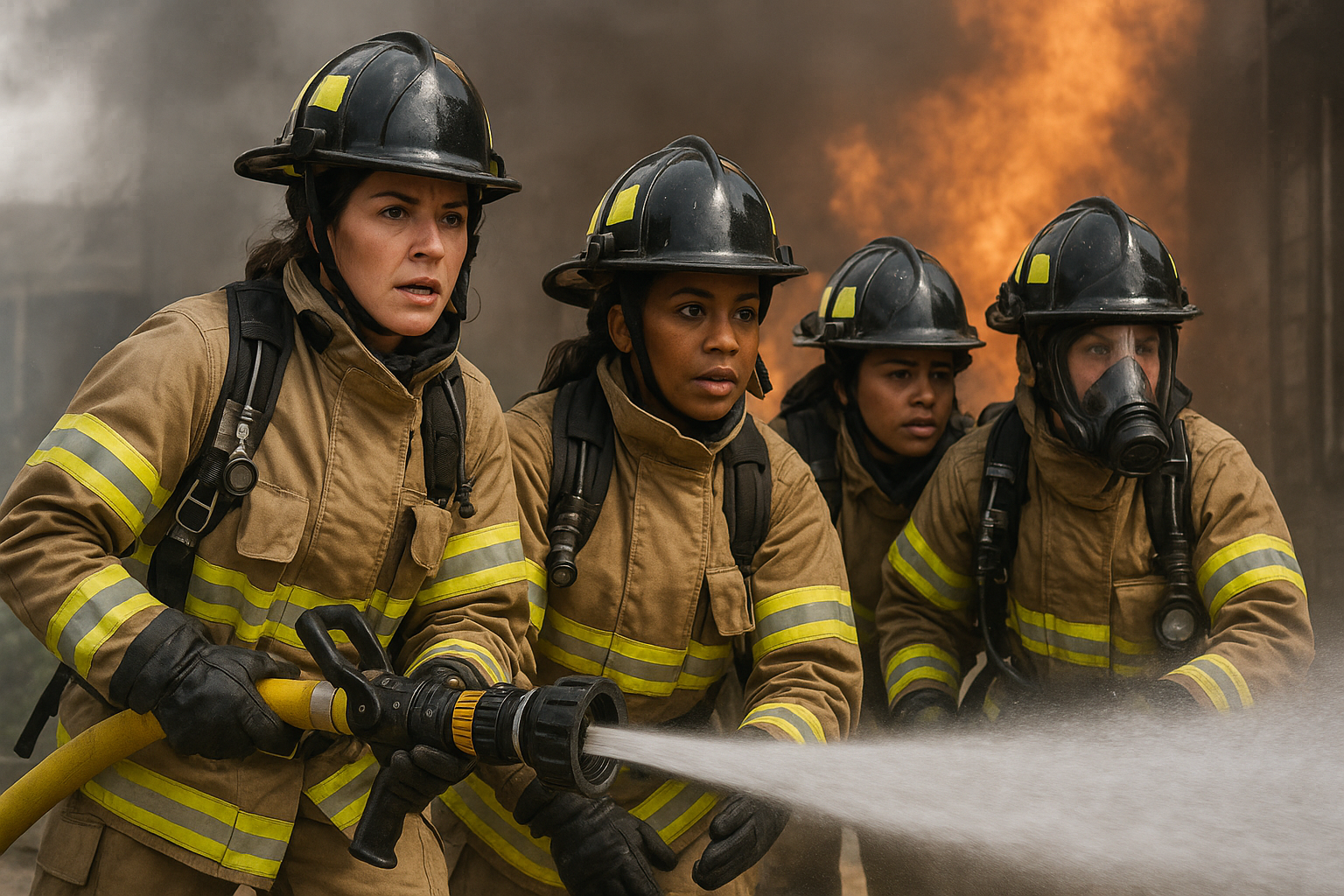Firefighter uniforms, or PPE, have traditionally been based on male body shapes and sizes. As more women have entered the profession, the lack of properly fitted gear has become glaringly apparent, with up to 80 % of female firefighters reporting restricted movement or unsafe gaps when wearing male-cut PPE.
Around the globe, women make up on average just under 10% of firefighters, including the UK, France, Germany, India and the US. In the UK, that’s around 3,200 and in the US, nearly 90,000 female firefighters. A fifth of firefighters in Portugal and Spain are women, and in Brazil and South Africa, the proportion is as high as a third. So that begs the question, why are firefighter uniforms still not designed and properly fitted to the female form, putting lives at risk daily?
In June this year, Bodi.Me had the privilege of attending the UK’s National Fire Chief Council (NFCC) to conduct a ground-breaking piece of research: The Real UK Firefighter Body Data. Our team measured a representative sample of female firefighters, comparing standard size ranges against actual body measurements. This allowed for a clear analysis of where the current standard sizing may misalign with real-world data.

Some of our key findings included:
- 75 % of the women measured have hips wider than their chest, which is not accounted for in standard sizing designed for men. Several exceed 115 cm, a hip dimension not even listed in most unisex charts
- 55 % fall into different alpha sizes for chest vs waist, e.g. chest M but waist S
- Height and girth are coupled in standard charts. That means that a woman who is size L in girth but only 160 cm tall has no direct off-the-shelf option
Why does it matter? When it comes to PPE, a proper fit is about more than comfort; it is a critical safety concern.
Some of the most pressing concerns:
- Thermal Protection Failure: Loose or baggy uniforms can create air gaps, allowing heat and flames to reach the skin. Conversely, uniforms that are too tight may reduce the insulating effect. Compression of the thermal liner or gaps at interfaces reduces the time‑to‑second‑degree burn by up to 40 %, even when the fabric is fully compliant.
- Chemical and Particulate Exposure: Gaps at the wrists, ankles, or neck can let in hazardous materials. Ill‑fitting coats with neck/wrist gaps show significantly higher PPE‑internal PAH and PFAS levels, increasing long‑term respiratory illness and cancer risk.
- Mobility Impairment & Trip Hazard: Gear that’s too large or too small hampers the firefighter’s ability to move swiftly and safely. Climbing ladders, crawling through confined spaces, or lifting equipment becomes exponentially harder, slowing response times and increasing injury risk as garments may catch on objects or lead to trips or falls.
- Equipment Malfunction: Poor fit can interfere with the proper functioning of SCBA masks and helmets, leading to dangerous leaks or dislodgement during critical moments.
The Way Forward: Simple Solutions
The assumption that “one size fits all” has left many female firefighters dangerously exposed. To ensure that every firefighter is truly “fit for duty,” departments must take proactive steps to provide properly fitted, gender-inclusive uniforms. Long-term solutions are essential, but there are a few simple measures that manufacturers can take now to improve the situation.
Fire services should offer a wider range of sizes or bespoke fitting options for female firefighters. With a simple-to-implement digital fitting tool, such as BodiMe’s Size-Me 3.0, firefighters will be able to select the right size in each item, offering them a safe and comfortable fit. Size-Me 3.0 uses just a few basic measurements to generate a 3D avatar of the wearer, helping them to see how a garment may fit and, in so doing, supporting them in making informed decisions about size selection.
Implementing a tool such as Size-Me 3.0 offers a quick solution to improve the current situation. However, while PPE is still made based on patterns designed for men, female firefighters will continue to face challenges with fit. Bodi.Me’s research demonstrates that, ultimately, female pattern PPE is essential. More size and fit research, as well as feedback from female firefighters, is needed to ensure female firefighter uniforms are fit for purpose, but this is a good start.
With the research to hand, Size-Me 3.0 can also help manufacturers to better plan stock requirements, helping to avoid overproduction and, in so doing, addressing one of the key barriers to developing PPE specifically fit to the female form, budget.

Conclusion: A Call to Action
The fire service prides itself on bravery and integrity; however, as many fire services continue to order standard-issue uniforms, the result is a systemic mismatch. A dangerous game of compromise between the body and the uniform meant to protect it.
It is time to extend these values to the PPE that every firefighter relies upon. The risks of inaction are too great to ignore. By listening to the voices of female firefighters, updating size and fit standards, the fire service can honour its commitment to protect all who serve, equally and without compromise.
The call is clear: fit matters. Lives depend on it.

